Contents
Guide
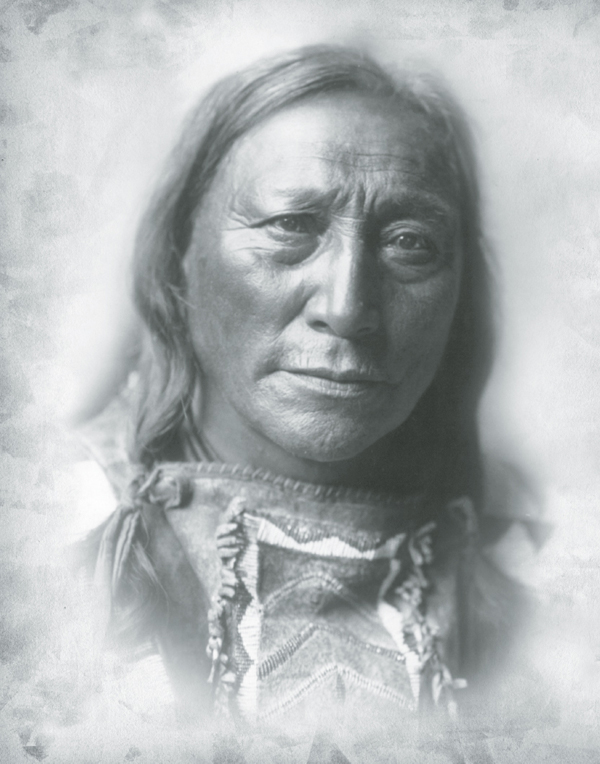
SAGA
of the
SIOUX
An Adaptation from Dee Browns
Bury My Heart at Wounded Knee
By Dwight Jon Zimmerman
Henry Holt and Company
NEW YORK
The author and publisher have provided this e-book to you for your personal use only. You may not make this e-book publicly available in any way. Copyright infringement is against the law. If you believe the copy of this e-book you are reading infringes on the authors copyright, please notify the publisher at: http://us.macmillanusa.com/piracy.
To my sister, Mary
D. J. Z.
 Note to the Reader
Note to the ReaderW HEN EXPLORER C HRISTOPHER C OLUMBUS landed on the Caribbean island of Hispaniola in 1492, he thought he had succeeded in reaching his goal of India. As a result, he called the natives he met Indians. Even after he and other explorers discovered that they had actually found a new continent, the name stuck. In the late 20th century, the term Native Americans became a popular replacement in an effort to help correct this historical wrong. Today both names are used, a practice that is repeated here in Saga of the Sioux.
Misnaming errors also extended to the names of tribes and people. Two common reasons for this were the varied skills of the translators, and the prejudices of the people receiving the translation. For instance, Sioux is an English corruption of a French word based on a name used by the Siouxs old enemies the Ojibwa (youll learn more about this ). The most famous example of an individual being misnamed is the Sioux chief Man-Afraid-of-His-Horses. He was not afraid of his own horses. A more accurate translation would have been They-Fear-Even-His-Horsesmeaning he was so dangerous in battle that just the sight of his horse inspired fear in his enemies. Perhaps if the original translator had recorded his name as Men-Afraid-of-His-Horses, he would have avoided creating such a misimpression.
Spellings of Native American names may also differ among sources due to the challenge of documenting nonwritten languages.
Undoing the errors of centuries is beyond the power of this one book. For the sake of clarity and comprehension, the well-known names such as Man-Afraid-of-His-Horses and others are used in this text, and their spellings follow Dee Browns original book.
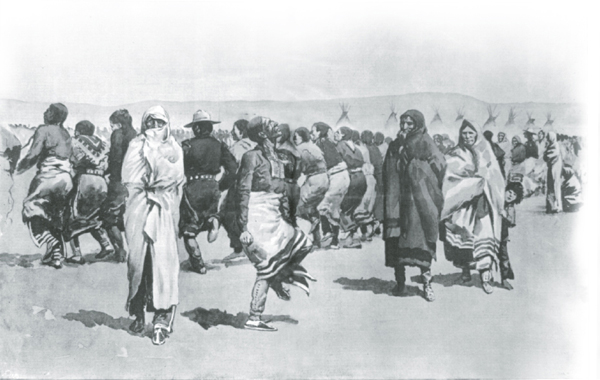
A Ghost Dance ceremony. [LOC, USZ62-3726]
 Introduction
IntroductionH ISTORY IS WRITTEN BY THE VICTORS, said British prime minister Winston Churchill. Its easy to understand why. The victors want to brag about their success. The surviving victims often dont want to talk about their defeat because the memory is too painful.
The history most people know about Indians is told from the point of view of the white people who conquered them. Theres another reason for this. Almost all Native American tribes in North and South America did not have a written language. And human nature being what it is, the conquerors, from the Spanish conquistadors to the U.S. Cavalry, wrote about their heroic deeds and pretty much ignored the bad things that happened to the Indians.
Thats why Dee Browns book, Bury My Heart at Wounded Knee: An Indian History of the American West, is so important. When published in 1971, it was as if a thunderbolt had struck. It used as many primary sources as possibleinterviews with Indian chiefs who fought the battles, government records, letters, diaries, articles, and other documentsto tell the Indians side of the story from 1860 to 1890.
And what a sad story it isa saga in which few white men are heroes. Bury My Heart at Wounded Knee revealed that an overwhelming number of white settlers, hunters, soldiers, and men of authority were arrogant, greedy, racist, murderous, and cruel beyond belief. To get Indian land, they lied, cheated, stole, and killed those Indians who crossed their paths, from warriors to innocent women, children, and the elderly. Today it is difficult, if not impossible, to understand how these people could have done what they did and feel no shame. But thats what happenedand not to just one tribe or nation. As Bury My Heart at Wounded Knee revealed, from sea to shining sea, it happened to them all.
Dee Browns classic is a big and powerful work. Condensing the entire book into one volume for a younger audience ran the risk of distorting it through oversimplifying the facts and unfairly leaving out many important events. All tribes suffered similarly from United States government policies and its citizens. Though all were eventually defeated, one nation stood out as having fought the longest and most successfully.
That is why this adaptation focuses on one Indian nation from Dee Browns book, the Sioux. As the largest and most powerful nation, the Sioux represent the story of the Native American experience in the American West. Their epic fight against the United States covered the entire three decades written about in Bury My Heart at Wounded Knee. Their leaders included some of the most famous warrior chiefs in Indian history: Red Cloud, the Siouxs greatest diplomat; Sitting Bull, the Siouxs greatest strategist; and Crazy Horse, the Siouxs greatest field general. The struggle to keep their land produced some of the most famous events in the Indian Wars: the Fetterman Massacre, the Battle of the Little Bighorn, the Ghost Dance, and finally, the Massacre at Wounded Knee.
In this retelling of the saga of the Sioux, details about events that dont directly deal with the Sioux story have been removed or condensed. Some extra information about people and locations mentioned in Dee Browns original text has been added to help readers who may be unfamiliar with those individuals and the places where they lived, fought, and died. And some names, such as Bozeman Trail for Bozeman Road, have been changed into a form more familiar to todays readers in order to reduce confusion. There are two new sections: the first chapter and the epilogue. The first chapter provides important background about the Sioux people. The epilogue summarizes what has happened to them since 1890. It contains some previously unpublished material from Dee Browns files. It also briefly reveals the Sioux nations ongoing epic struggle to keep its identity and tells how, eventually, they were able to achieve a measure of success against a federal government that had so often wronged them.
Because most people are more familiar with the English translation of Sioux names, those translations are used throughout to avoid confusion. But, in the case of important chiefs, their native-language names are also included.
In the 30th-anniversary edition of Bury My Heart at Wounded Knee, Dee Brown wrote, We rarely know the full power of words, in print or spoken. It is my hope that time has not dulled the words herein and that they will continue through the coming generation to be as true and direct as I originally meant them to be.
In 2011, as Bury My Heart at WoundedKnee celebrates its 40th anniversary, it is my hope that Saga of the Sioux


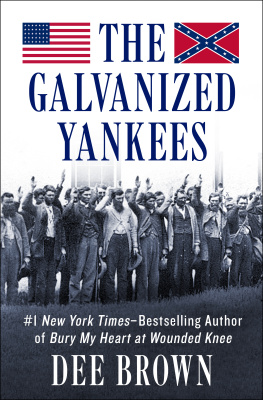


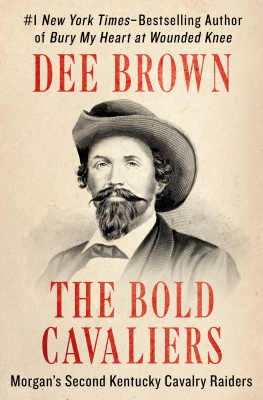
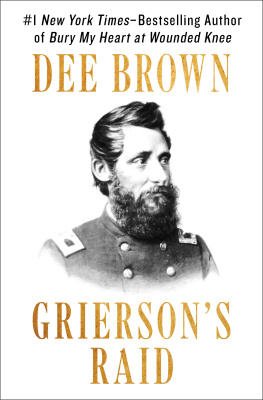

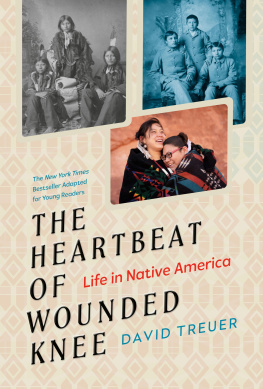
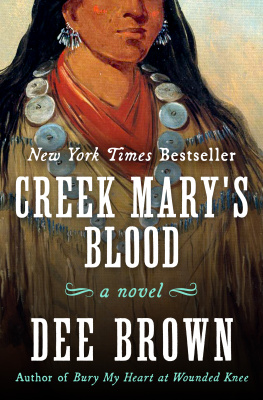
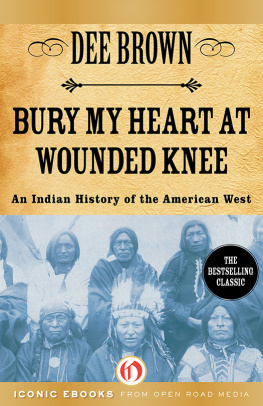

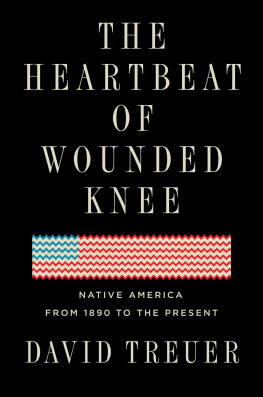
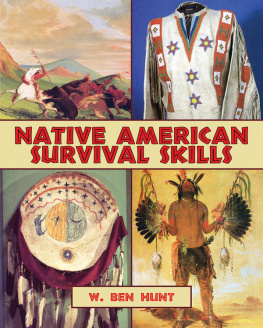


 Note to the Reader
Note to the Reader